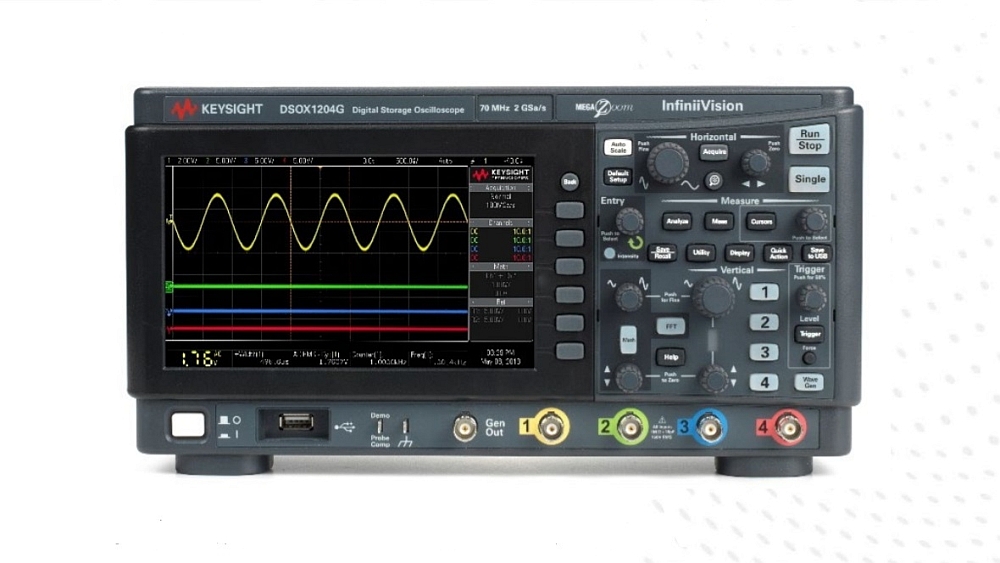- Keysight Technologies is expanding its family of entry-level InfiniiVision 1000 X-Series oscilloscopes with 200MHz models with two inputs.
- These oscilloscopes come standard with decoding capabilities for five serial data protocols.
The InfiniiVision 1000 X-Series oscilloscopes share the same user interface and measurement technology as the more advanced scopes in Keysight’s InfiniiVision family. Their user interface, now available in 15 languages, includes tools to help you understand the scope’s functions and options, as well as configuration tips for complex analysis options.
Dedicated functions and signals for learning how to use oscilloscopes are available, particularly for the education sector.
The bandwidth of the new Infravision 1000 X-Series models is scalable. They can be upgraded via a software license. This allows users to purchase the instrument with the bandwidth they need and then upgrade it as their electronic projects evolve.
InfiniiVision 1000 X-Series oscilloscopes with two or four inputs offer four bandwidths: 50, 70, 100, and 200 MHz.
- Sampling rate of 1 or 2 GS/s per channel depending on the model.
- Refresh rate of 200,000 waveforms per second.
- Six instruments in one: frequency response analyzer (Bode plots),
- 20 MHz function generator, protocol analyzer, digital voltmeter and frequency counter.
- Standard USB and LAN connection that allows multiple users to work on the same instrument by connecting to the network via LAN via a web browser for remote control.
- Fast Fourier Transform (FTT) to analyze signals in the frequency domain.
- Analysis of signal parameters to identify crosstalk and distortion problems caused by amplifier non-linearity.
- Pass/Fail mask tests at a rate of up to 200,000 tests per second.
- Triggering and decoding of the most common low-speed serial protocols : I2C, SPI, UART/RS232, CAN) and LIN. The Lister function allows you to view time-correlated data packets.






